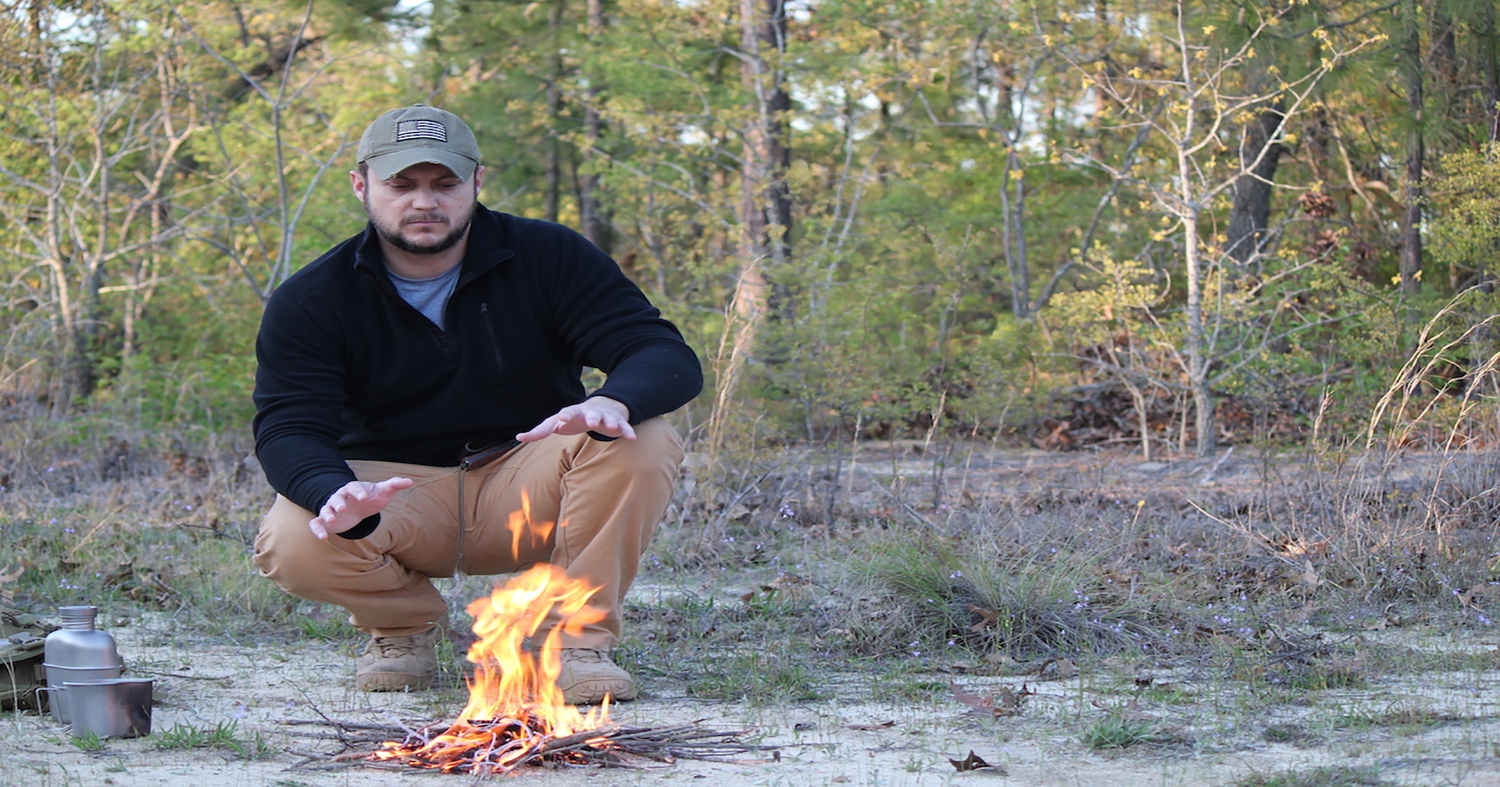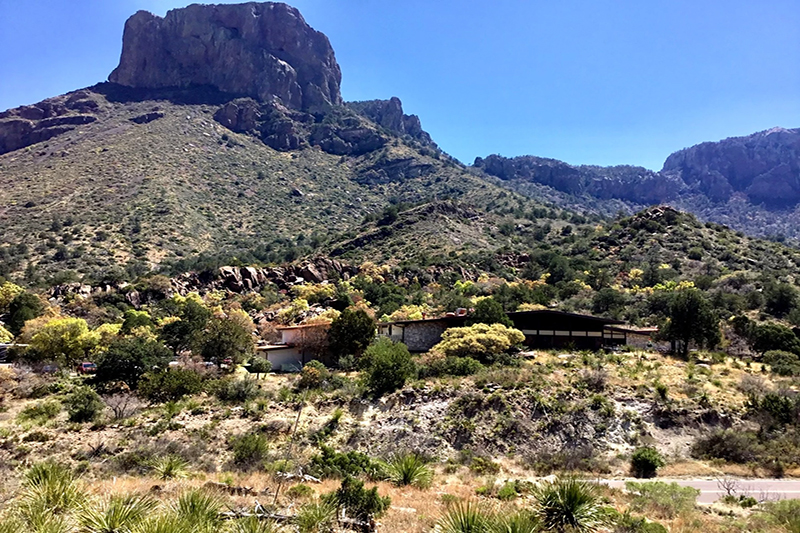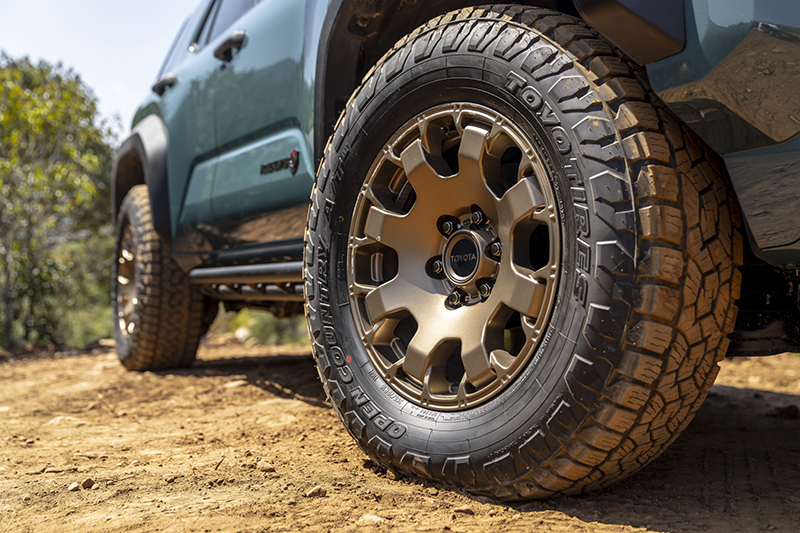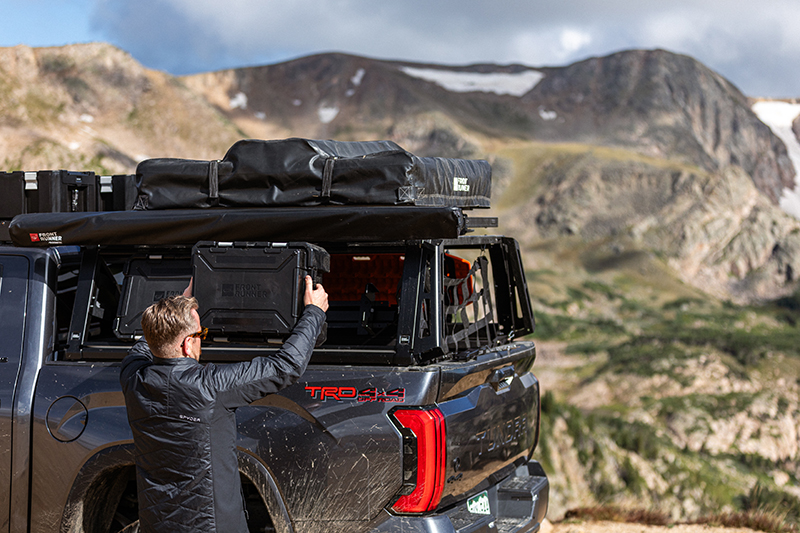Fire is one of man’s greatest discoveries. For centuries it has kept him alive and is used daily in modern civilization. Fire provides warmth, makes food edible, disinfects water, signals for rescue, illuminates the darkness, and makes other tools. The list is endless. The vast majority of your survival depends on your ability to create fire.
Being able to make fire on demand is invaluable in a survival situation. But first we must understand what is needed to make fire.
FIRE TRIANGLE
Fire cannot exist without three elements known as the Fire Triangle:
- Heat (ignition source)
- Oxygen
- Fuel (something to consume)
These elements must be in the proper proportions for a sustainable fire. Heat can be provided by a flame from a lighter or match. It can also be created by a spark from a flint or a modern man-made mixture known as a ferrocerium rod. Oxygen is all around us and can be applied by blowing a small flame to make it larger. An over abundance of oxygen can blow out a flame; too little will choke a flame out.
For our application, fuel will be broken down into three components:
- Tinder — natural or man-made highly combustible material
- Kindling — twigs that are pencil-lead to pencil-width size
- Fuel — wood that is thumb-width to log size
THE FIRE KIT
A fire kit is designed to ensure fire no matter the situation you face. In the military we have a saying, “Two is one and one is none.” In my experience having three separate ways to make a fire is the most reliable approach.

An example of a homemade fire kit
Container
To begin, you need a way to carry and protect this kit. The number one enemy of fire is water. A waterproof bag or container is recommended to keep your fire starting materials dry. Something like an aLOKSAK waterproof bag or small Pelican hard case is a good place to start.
Lighter
Probably the most convenient and popular method of starting fires in modern times is a cigarette lighter. The BIC Lighter will typically make 3,000 flames. They are effective as long as they are kept from freezing or getting wet.
Magnesium Fire Starter
This is a combination fire starter issued to the military. It includes a sparking insert (ferrocerium) inlaid into a magnesium block. The ferrocerium rod will produce extremely hot sparks when scraped. It can be used when wet, making it an advantageous tool to carry in a survival kit. The magnesium block can be scraped into a pile and used as tinder when there is no natural tinder or when tinder is wet.
Matches
Waterproof matches are available at most outdoor stores. They will produce a flame even after being submerged under water. You can also make your own by coating “strike anywhere” matches with clear fingernail polish. The polish acts as a waterproof coating.
Fresnel Lens
Not just for reading the fine print, this is a small plastic magnification card that can be used to direct the sun into solar ignition. As long as the sun is in the sky you have an eternal fire-making device.
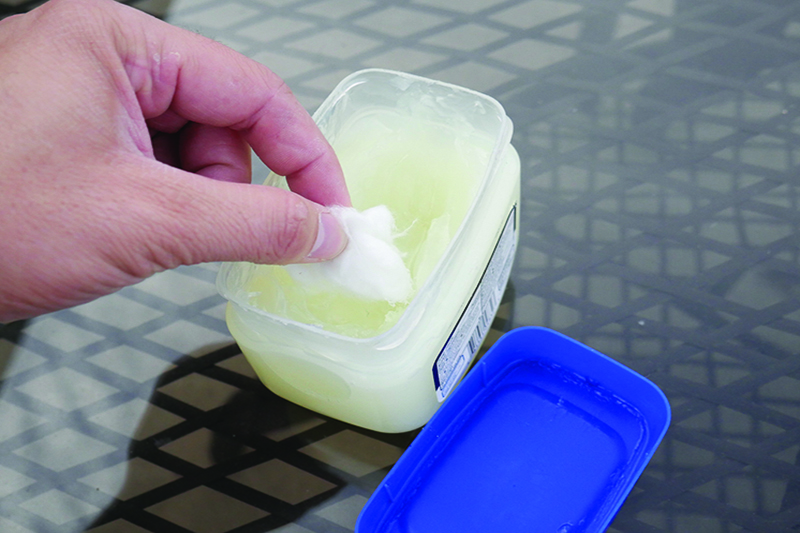
Cotton ball saturated in petroleum jelly
Cotton Balls and Petroleum Jelly
This is an easy DIY fire tinder using items commonly found in your medicine cabinet. Cotton balls are a very fine combustible material that will produce a quick burning flame from the sparks of the magnesium fire starter. You can prolong this flame up to 8-10 minutes by applying a small dab of petroleum jelly. The petroleum jelly will also make the tinder relatively water-resistant. An old film canister or medicine bottle is a great place to store them.
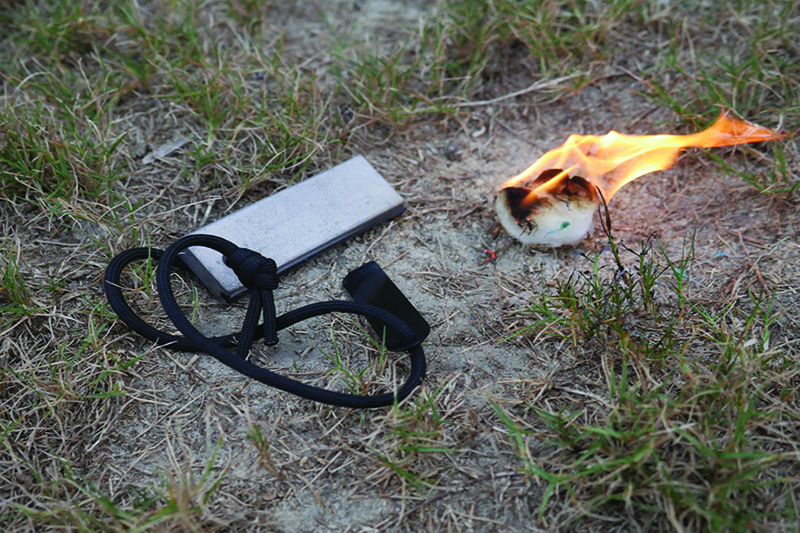
Cotton balls saturated in petroleum jelly can burn 8-10 minutes and can be ignited easily with a magnesium fire starter
FIRE HACKS
Here are a few unconventional techniques for survival fire starting:
9-volt and Steel Wool
By touching the positive and negative posts of a 9-volt battery to a piece of steel wool the current will ignite the wool, causing it to smolder.

Steel wool and a 9 volt battery
Dryer Lint
When cleaning the lint trap, collect all that fine fire tinder and place into a bag. It works as a great tinder material that takes a spark very well.
Fatwood
Also known as pine pitch, fatwood can be found in the resin-impregnated pieces of downed pine trees. It is highly flammable and will take flame even after getting wet. The benefit is that it can be easily found in the wild.
Building fire is one of those crucial skills that shouldn’t be taken for granted. Always be sure to have a fire making kit with you on your next adventure!
About Jack Richland:
Jack Richland is an expert in Urban/Wilderness Survival and former eight year U.S. Marine veteran. During that time he deployed to countless countries across the globe. Jack’s experience and training led him to start Black Scout Survival- a website, store, survival school, and YouTube channel. In his off time Jack enjoys taking his Jeep JK off-roading, casting flies to redfish, and snowmobiling in the back country of Montana.
You can learn more about survival techniques and skills by visiting www.blackscoutsurvival.com
OutdoorX4 Magazine – Promoting responsible vehicle-based adventure travel and outdoors adventure


